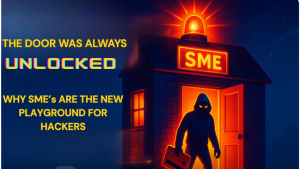Blockchain Technologies and Quantum Computing in Cybersecurity: Friends, foe or happy marriage?

Blockchain and Quantum Computing are arguably two of the most extraordinary and game changing technologies of our time. However, the most common consensus is that fundamentally they are diametrically opposed to each other because they have core development principles that conflict. It’s a little like coriander – you either love it or loathe it. Advocates for quantum computing believe it will be the challenger that undermines blockchain and to the contrary blockchain advocates believe that quantum technology is a nascent player and improvements to blockchain will surpass any alleged challenge. It’s a bit of a quandary because in reality there’s always a middle ground, where instead of being foes, these technologies could play nicely together as best friends. It might be fanciful, but they could even become a happy marriage and produce huge benefits and impact to ensure our digital world is trusted and secure by design.
The conflict arises primarily in three areas, decentralisation versus centralisation, the security paradox and privacy as opposed to transparency. Proponents of quantum technology highlight that it is computationally powerful enough to break the cryptography used within blockchain such as the Elliptic Curve Digital Signature Algorithm (ECDSA) for the creation of public-private key pairs and the SHA-256 which is used for the creation of hash functions. It’s almost a gloat worthy feature that blockchain’s core disruptive security features could be broken by quantum technology placing transaction and data security at risk and of course exposing crypto assets to the possibility of theft and unauthorised transactions. This thinking feeds perfectly into the hearts and minds of blockchain naysayers looking for ways to compete as foes rather than play as friends. This thinking can also blind us to the true value of working together and to realise that the greatest potential occurs when we see opportunity from strengths not weakness because of difference.

Blockchain’s rely on a mechanism of consensus – or agreement – to validate and add blocks of data. These mechanisms rely on computational calculations and assessment and inefficiency is the very reason new consensus mechanisms such as Proof of Stake have evolved from Proof of Work used by Bitcoin, the first and still the largest blockchain. Quantum computing’s strength is that it has the innate capacity to churn through computational calculations at unimaginable speeds. If that strength were applied to blockchain and the two worked together, blockchains could arrive at consensus in a faster, more efficient way, overcoming one of the barriers to adoption. Transactions could be faster, and more efficient and use cases of the technology could expand.

With growing use of IoT, sensor technology and AI, it’s difficult for a human mind to think how fast information could be processed. From a cybersecurity perspective, it could mean that the potential quantum efficiency in the wrong hands could expose a risk for malicious actors to carry out a 51% attack where they can disrupt the recording and approval of new transactions. It’s important to understand that technology can be friends but there’ll always be enemies trying to rattle the cage of harmony and cause conflict in our digital world. That isn’t a technology issue – that’s a human ethics, integrity and honesty problem. Criminal minds look for weakness to exploit so the advantage is that if technology can think and work faster than they do, we might edge ahead in the race for digital trust.

These potential threats have led to a great deal of work on post-quantum or quantum-resistant cryptographic algorithms and systems that by design will retain blockchain security making them immune to security threats posed by quantum computers. If you think about it, it’s like working together to create a vaccine to overcome an unwanted predicted outcome. Transaction visibility and provenance is another core principle of all blockchain technology. Having gatekeepers and developing systems in different ways such as private and permissioned blockchains affords enhanced security access and availability for sensitive environments but the transparency still remains at the heart and soul of blockchain. To the contrary, quantum computing is fundamentally driven by ultra-privacy. It uses complex encryption methodology such as Quantum Key Distribution (QKD) where any attempt to observe a quantum system inherently alters that system. As a result, the transparency of blockchain conflicts with the concept of perfect secrecy of quantum communication.

But again, the real opportunities lay with how these two opposites attract. Quantum secrecy can certainly work in harmony when blockchain systems require access to the outcomes of a central source of highly sensitive information and data subsets and that is required quickly such as political, health, financial or digital trade information. This profoundly expands the ‘secure by design’ principles that cyber and digital experts often discuss. If we really want to shift our minds to ‘what’s possible’ overlaying AI into the mix for both blockchain and quantum computing could exponentially increase secure data processing to the point that cyber risks, trends, breeches and reputational challenges could be identified in moments rather than months or years that it takes now. For any CISO, this could be game changing relief.

There is already work being conducted on marrying the benefits of blockchain and quantum technology to produce quantum blockchains. This can be easiest described as a decentralised, distributed, encrypted database that is built with quantum computational technology and information theory. In essence, in a quantum blockchain network, each node stores a copy of the blockchain – encrypted by quantum theory. Researchers from several companies and countries are exploring the concept of quantum blockchains, that would be able to maximise the potential of QKD properties that prohibits cloning and intrusion giving maximum digital security and digital trust by design.

The future of a trusted digital society through a marriage of what many believe are foes into quantum blockchain will be beneficial for all technologies that have a foundation based on distributed storage and consensus mechanisms. An obvious use case would be electronic voting systems and international collaboration systems such as pandemic, terror and natural disaster warning systems. Also critical systems, where development of these is often held back because stakeholders have no trust, data movement is limited by nationalistic regulatory mechanisms and data sources are highly sensitive.
The final primary conflict between blockchain and quantum technology is decentralisation where authority and decision-making processes are distributed to all participants or nodes. It is democratised by design. Over the years, blockchain technology and its costs have lowered much the same as the Internet, WiFi and data have. Quantum technology is still nascent, few in numbers, very high-cost, and requires super specialised environments with expertise to operate. These parameters inherently lead to a centralised model because it is not something that is yet accessible to many. This conflicts with the core principle of design of blockchain – that it is available to all.

In reality though we know that education and understanding of blockchain technology is still limited despite it being foundational technology.
We know that less than 3% of our global decision makers have knowledge about blockchain and that fear and misinformation still drives adoption. We are really only now starting to see institutional and broad adoption throughout business sectors. It could therefore be argued that blockchain, a decentralised technology, has knowledge and adoption that in many ways is still centralised. In part this is more about the fact that each is at a different place in their development curve rather than centralisation is in conflict. Is that any different than being a friend with someone of a different age or level of experience?

Technology advances are happening at an exponential rate of change. Blockchain is a foundational disruptor in the way we engage in business and life digitally whereby trust by design is its core principle. Quantum technology can think and process information at speeds that are unimaginable. And AI can read information from vast sources as humans we would take a lifetime to read. All these do have core conflicting elements, as do people. We are all different. But our strength for a secure by design future sits with our ability to see how our weaknesses can be bolstered by playing as friends with technologies that can harmoniously complement and support challenges.
The world becomes our oyster – provided our thinking includes ethics, integrity and acceptance that people, not technology, are innovative.







